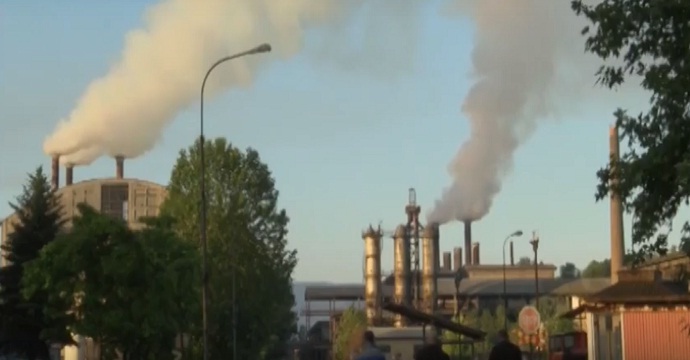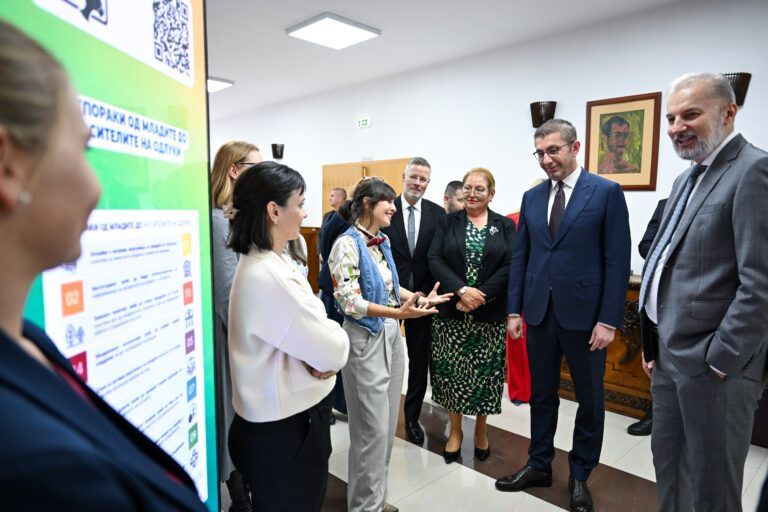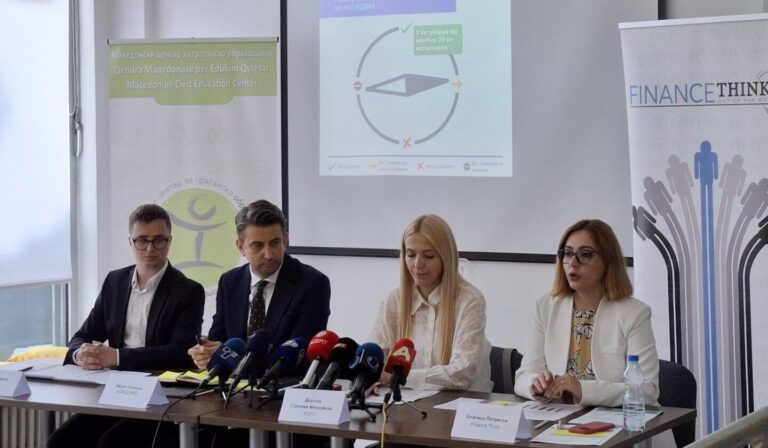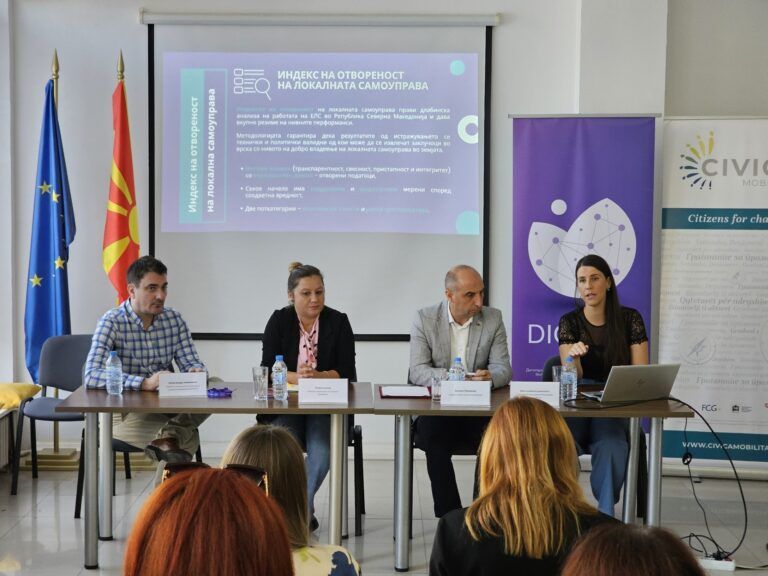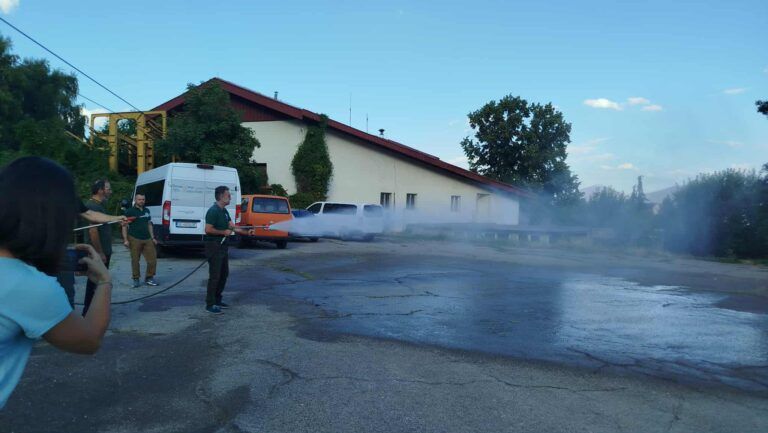Chaotic Implementation of the Regulation for B-Integrated Environmental Permit
Only a few municipalities have the capacity to implement the regulations for B-integrated environmental permits. In practice, there is complete chaos. There is no coordination between central and local authorities. The same plot of land may receive permits both for a house and for a factory.
Author: Goran Lefkov
The legislation for implementing B-integrated environmental permits has experienced a complete debacle in North Macedonia. We tried to find out how many B-integrated environmental permits have been issued by the Ministry of Environment and Spatial Planning, but received no response.
Using the Law on Free Access to Public Information, we attempted to obtain data from the municipalities responsible for issuing B-integrated environmental permits. Only about 40 out of 80 municipalities responded. The City of Skopje is responsible for issuing B-integrated permits for the municipalities in its area, but we did not receive data on how many permits have been issued so far.
Even ten years after the regulation for implementing B-integrated permits was adopted, experts doubt that municipalities have the capacity for this regulation.
“In many local governments, municipal inspectors lack both the capacity and knowledge to implement the regulations for B-integrated environmental permits,” says Aleksandra Bujarovska, a lawyer specializing in environmental law implementation.
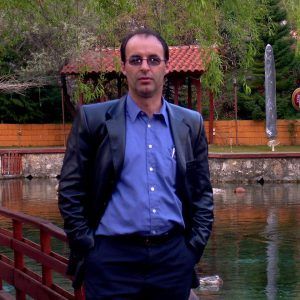
On the ground, significant problems are emerging. Central and local authorities do not coordinate permit issuance, which misleads citizens.
Berat Sela
“We have a situation here in the Struga region where central institutions have used outdated plans for settlements, which in the meantime have been built up with legalized structures,” says Berat Sela, founder of the NGO Natura from Struga.
They carried out a project supported by the Civica Mobilitas program of the Swiss Agency for Development and Cooperation (SDC), and these are their findings.
Good Law, Poor Implementation
The legislation on B-integrated environmental permits is considered good, as much of it is adapted from European regulations. In North Macedonia, the period for harmonization and implementation of the integrated permit legislation was from 2007 to April 2014. From 2005 to 2007, the then-government under Vlado Buckovski created an inventory of companies required to obtain B-integrated environmental permits. This inventory included 260 installations (companies).

Aleksandra Bujarovska
“Under this legislation, all polluters with either A or B permits were supposed to upgrade their technology and receive integrated permits by April 2014. Some large companies such as ‘Jugohrom,’ ‘Oslomej,’ and REK ‘Bitola’ failed to meet emission limits. For small polluters subject to B-integrated permits, we have almost no information. Almost no one knows the status of their implementation or how much they pollute. Municipal inspectorates, I believe, lack both the time and knowledge to monitor emissions from installations requiring B-integrated permits,” says Bujarovska.
She doubts that the State Environmental Inspectorate has the capacity to enforce the standards in practice, and municipal inspectorates have virtually no capacity at all.
The EU Directive on Integrated Pollution Prevention and Control, transposed into our legislation, no longer exists. It has been replaced by the Industrial Emissions Directive, which will also be transposed into national legislation. Amendments to this directive will need to be implemented locally in the coming years.
The percentage of companies that have actually met the standards for obtaining B-integrated permits is very low.
Only 80 Permits Issued in 40 Municipalities
For this story, the investigative team from the Center for Investigative Journalism – SKUP Macedonia researched the number of issued B-integrated environmental permits. Requests under the Law on Free Access to Public Information were sent to all municipalities in North Macedonia. Only 42 municipalities responded.
In these municipalities, 86 B-integrated permits were issued; for 39 installations, permits were issued for compliance with the operational plan. Although the final deadline for implementing the legislation was April 2014, 38 applications are still in process.
According to SKUP data, from 2007 to November 2013, only about 30 companies had a permit for compliance with the operational plan, which was later supposed to become an integrated environmental permit—if they met the operational plan requirements. After that, there was real “dispersion” in permit issuance, according to Aleksandra Bujarovska.
“From November 2013 to April 2014, in less than six months, 150 installations received permits. Initially, there were 170, but some companies withdrew. The number of permits issued in such a short time is enormous. During this period, the Ministry of Environment’s website was not functioning. The main source for a company to know it had applied and received a permit was the Ministry’s website,” Bujarovska explains.
The case of Gostivar Municipality is also telling. Eight companies applied for B-integrated permits. None have received the permit yet; five are still in process, while three were rejected due to revoked mining concessions.
Radovis Municipality reported that it has no installations requiring B-integrated permits, although the inventory lists three companies in the municipality that should reduce pollution and obtain the permit.
Unprepared Municipalities, Poor Implementation
Municipalities in North Macedonia were largely unprepared to implement the regulation for B-integrated permits. Only a few had the personnel and knowledge required. According to Ljupka Gligorova, a certified environmental engineer, municipalities such as Veles, Strumica, Bitola, and some Skopje municipalities have the capacity and knowledge for implementation, while smaller municipalities do not.
“Most companies (roughly 90%) submitted applications, but many did not fully meet permit conditions, and procedures for transitioning from compliance to integrated permits remain incomplete,” says Gligorova.
She adds that inspection oversight for implementing the obligations of the integrated permit legislation is lacking. Without inspections, companies will not comply voluntarily. Aleksandra Bujarovska notes that 90% of applications submitted to municipalities are incomplete.
According to the law, companies failing to obtain B-integrated permits by April 2014 should have been closed. However, minor legislative adjustments later prevented closures, and today almost no company has been shut down for lacking a B-integrated permit.
Quarries Poison Labunishta
The problems with B-integrated permit issuance are most visible in the Struga region. Labunishta village has five quarries immediately nearby. Air and environmental pollution from these quarries is severe.
According to Alija Tasimi, president of the local community, the problem is enormous.
Alija Tasimi

“One quarry in Labunishta received a permit to process sand, even though it is clearly unsuitable. As citizens, we believe that three of the quarries have no basis for a B-integrated permit. For two, there is no consent from the local community, and for the third, I am certain there is no consent or B-integrated permit. Without local approval, the permit documentation cannot be completed,” says Tasimi.
Labunishta has about 1,700 houses and 10,000 residents. The population feels the impact firsthand.
“The entire village suffers from the quarry. While there is a small processing site operating 2–3 hours per day, which produces dust but is less harmful, the quarries extract 40–50 truckloads daily. Dust covers the settlement; after rain, vehicles are coated with 2 cm of dust. The air is heavily polluted. The whole village suffers from the quarries. Dust from passing trucks is incredible,” says Dzhabir Asanoski from Labunishta.
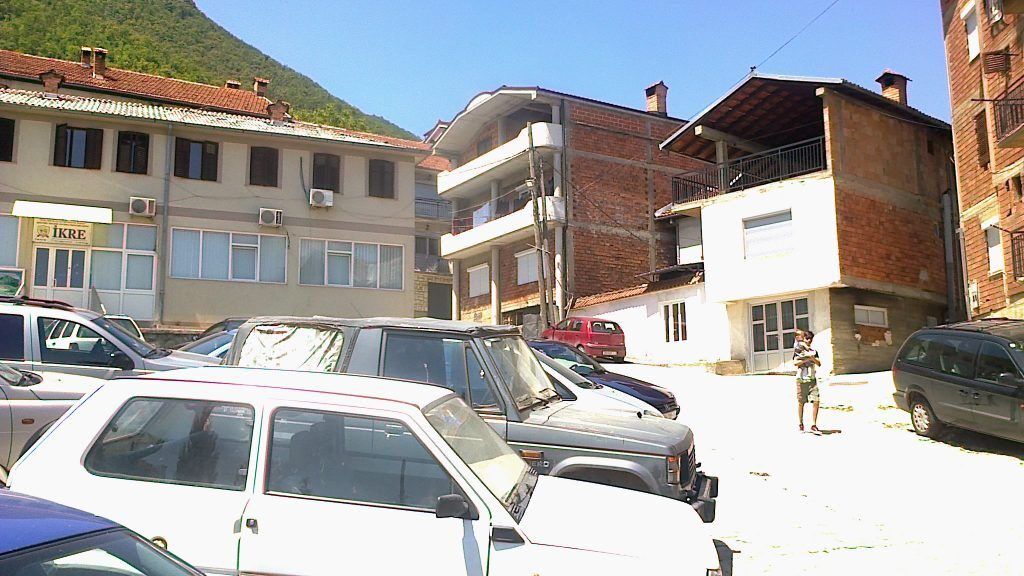
The NGO Natura from Struga opposes issuing additional permits in the Struga region.
Berat Sela
“As the ecological association Natura, we oppose issuing B-integrated permits for additional quarries in the Struga region. There are already 17 quarries in Struga and Strushko. That is too many,” says Sela.
According to Struga Municipality, only the Vlash quarry in Labunishta has a B-integrated permit. Overall, six B-integrated permits have been issued in the municipality.
What B-Integrated Environmental Permits Mean
A and B-integrated permits were first implemented in 2007. Amendments to the Environmental Protection Law divided polluters into A and B categories based on capacity.
These permits implement the EU Directive on Integrated Pollution Prevention and Control. The directive aims to minimize pollution from these installations using an integrated approach—monitoring air, water, and soil pollution together. Previously, permits were issued separately for water use, waste, and emissions. The directive aims for zero emissions, zero waste, maximum energy efficiency, and minimal resource use.


